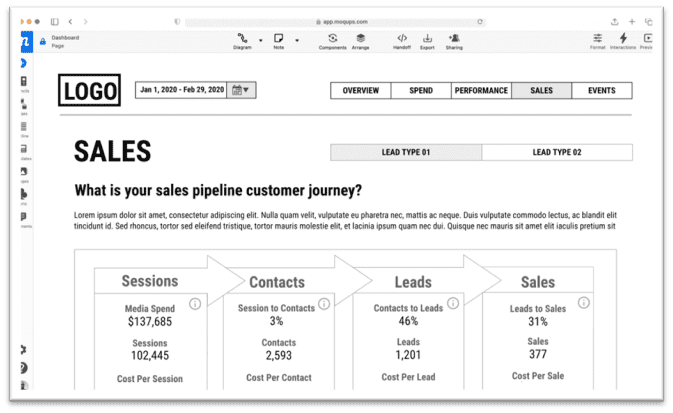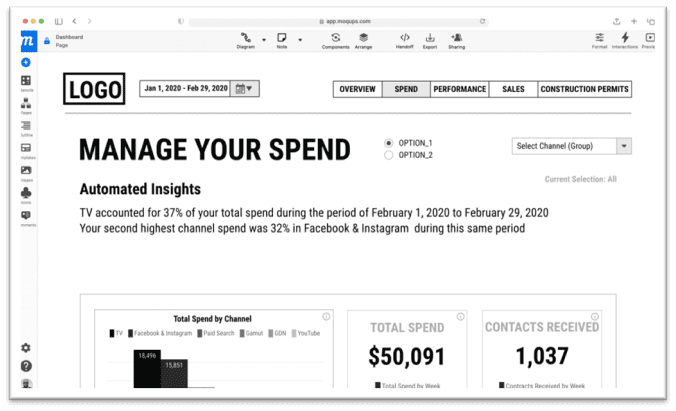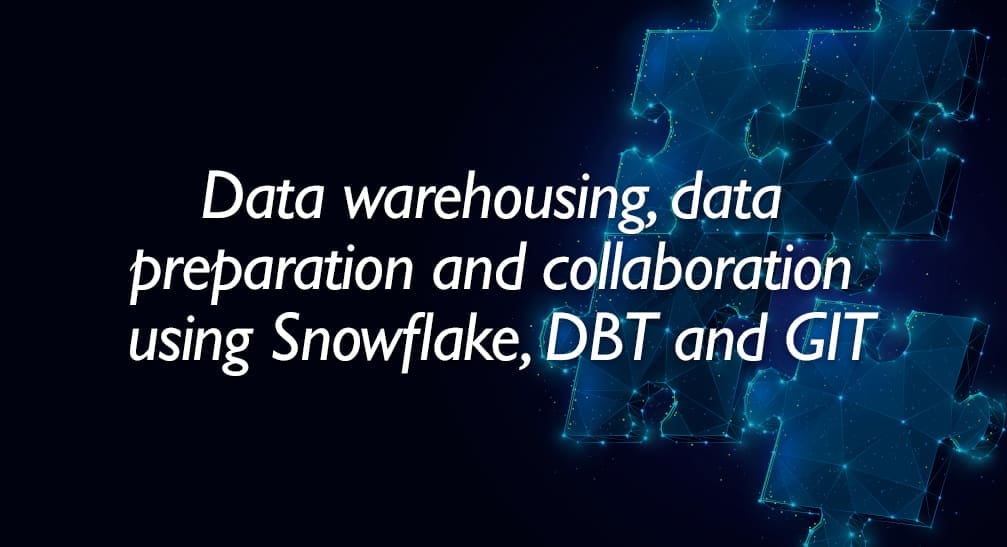A Global Team in Need of Unified Communication Tools
Since we have offices in New York, Charlotte, Toronto, and Bangalore, online collaboration is essential to our success. That’s where Moqups has been a game-changer.
Meeting the challenges of Modern BI Delivery
In the early design stages, it’s so important to hear from all project’s stakeholders. And not just the people who consume the data, but the folks responsible for pulling the levers; they’re the ones who might say, “Sure, that’s a cute metric or an accurate diagnostic. But it’s not particularly useful because I can’t act on it.”
Every member of our team gets access to the Moqups project, as does the client. We need everyone to review the iterative progress, and to leave comments and annotations, in the moment, before ultimately signing off on key milestones.
Why Dashboard Wireframes Matter
On a typical data project, which may include creating applications in Tableau or Datorama dashboards, we’ll have between six and eight people on the team: a Solutions Architect, a Client Success Lead, a Project Manager, a couple of Implementation Engineers and a Solutions Lead, acting as a kind of player-coach.
We’ll also involve our team of Front-end Developers. They’re the ones who will ultimately write the JavaScript and the CSS. Their job is to assess the proposal’s feasibility.

They have access to the Moqups project so they can react to the dashboard wireframes and say, “Yes, this is doable”. “We have widgets that support this,” or “No, we really can’t do that within the allotted time frame and budget.” This can conservatively save us more than 50 work hours.
Kickstarting projects with templates works incredibly well for us. Starting from one of our industry-specific templates probably captures about 60% of what our clients need. That frees up a considerable amount of time and energy.
We have a total of five stages in any project. Stage One encompasses onboarding, solutions design, and low-fidelity dashboard wireframes. This is a critical first deliverable where we say, “I heard what you said. I’ve wireframed what you said. Have we got this right?”

Normally, we start out with something that is very low fidelity, often from our own baseline templates: top headers, top level widgets, five boxes, and basic navigation.
At this stage, the mockup isn’t executed by UI or UX people who have in-depth knowledge with delivering experiences. That work is completed by rank-and-file analysts who know the data and the constructs.
Next, we onboard the actual data. Once we’ve confirmed that the numbers support the requested widgets, we replace the generic representations in the lo-fi dashboard wireframes with client-specific language and visualizations.
As the client gives us feedback, we can iterate within the “soft” Moqups space before going to a “hard” commit. It’s important to incorporate any changes before we start coding because, by that point, it means a change order and that means additional time and money.
Finally, we polish the interface and turn it into a clickable, mid-fidelity prototype so stakeholders can interact with the interface within Moqups. This includes clicking to navigate between spaces, switch views, open dropdowns, or hover over icons for tooltips, help, and support.
Why Moqups works so well for us
Moqups helps keep us focused on the definitive goal: building better data products and experiences for our clients.
Moqups also helps provide accountability for both our clients and us. That level of accountability must be very tight because, when you’re talking about data, it can be kind of ambiguous. Moqups makes what often lives in the head of an analyst into something with a physical output that can be seen and touched before writing a single line of code. For us, this is gold when accountability is the biggest predictor of project success or failure.
Because our clients collaborate on Moqups projects, they can watch the project evolve, leave comments, and approve everything from the layout and the experience to the dropdowns and widgets. That means they’ve signed off every step along the way.
Showing that we’ve listened and understood is important both for the viability of the product and for our relationship with the client.
Moqups lets us create an intermediary where we can talk to the client about those possibilities and be highly creative in our thinking, while still delivering on time and within budget.
We’ve tried alternatives, but…
The biggest surprise with Moqups was how quickly clients embraced it. Clients never say, “Oh, this is clunky, this is weird” or “What are you asking me to do?” Moqups is so easy for them that it never slows down our conversations. If anything, it makes clients excited to be hands on and engaged in our product. So, that’s a win for us and the client.
About Decision Foundry
Decision Foundry is a Salesforce, independent software vendor, managed services provider, and a certified award-winning Salesforce Marketing Cloud integration partner. Decision Foundry closes the gap between data accessibility, platform adoption and business impact. Our consulting services include the integration of Data Cloud, Account, Engagement, Personalization, Tableau, and Intelligence.


